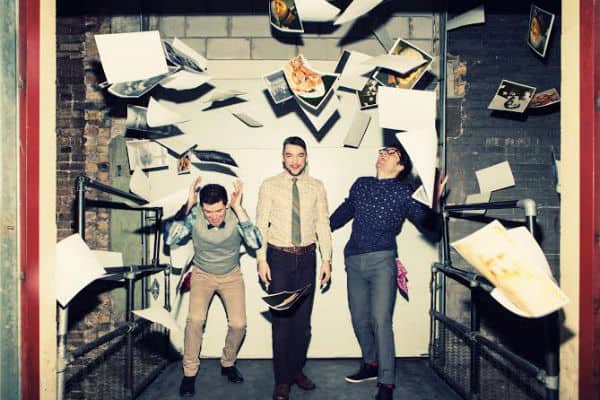With The Gay Heritage Project, performer/creator/super-talents Damien Atkins, Paul Dunn, and Andrew Kushnir have set out to answer one question: is there such thing as “gay heritage”? Running until Dec. 8th at Buddies in Bad Times, the show presents their findings in hilarious and moving vignettes which the cast has knit together with the help of fellow super-talent, director Ashlie Corcoran. We caught up with Ashlie about the process of creating the show, what it was like being the straight girl in the room, and the benefits of seeing “heritage” as a verb.
SheDoesTheCity: How did the Gay Heritage project come about?
Ashlie Corcoran: Damien, Andrew and Paul started developing The Gay Heritage Project five years ago. In 2008, Paul was doing research for another play, when he read The Men With the Pink Triangle by Heinz Heger (about the Nazi’s treatment of homosexuals). He experienced—as he articulates it—both outrage and yearning after he read the book. He approached Damien and Andrew with an idea to create a piece of theatre that would explore the question of whether or not there was a direct link between them and the gay people who’d come before them. Importantly, the guys decided to explore gay heritage, rather than gay history, because they wanted to make a connection between the past and the present, and to be able to look to the future as well—to explore legacy.
SDTC: What was the process of creating the show, and when in the process did you come on board?
AC: We approached the word heritage as a verb rather than a noun. We wanted the piece to be an activity that we could undertake with our audience—and thereby create a community.
Specifically, we are using a form of theatre called Vocal Masque—that both Paul and Damien teach at the National Theatre School. Basically, it is made up of short two- to four-minute-long scenes that tackle this idea of Gay Heritage from many different perspectives. The creators write these pieces “on their feet”—often resulting in hilarious, touching and deeply insightful scenes. A part of Vocal Masque is that the actor usually plays many different parts in one scene. The scenes can be deeply personal or wildly fantastical. It is highly physical, incredibly quick, and has over 100 characters in it! This makes for a lot of humour but also creates a lot of space for the audience to participate imaginatively.
I came on board about two years ago–when the boys were preparing to present a 25 minute version of the piece at the Rhurbarb Festival.
SDTC: I read that there was originally four hours of material. How did the team go about whittling that down? Are their any chunks that were particularly hard to let go? (And can we maybe expect a gay heritage sequel?)
AC: It’s true! We have about four hours of material that has been developed through various workshops. During this rehearsal process, we started almost immediately attempting to curate the work into a cohesive piece. This started by the guys all coming in with a potential version. We tried each of these versions on our feet—and learned a lot from this process. Then we started from scratch, building potential sequences together. We really dug the idea of a five-act structure, and we all instinctually gravitated to particular themes for each of these acts.
SDTC: What do you think your specific point of view brought to the Gay Heritage Project?
AC: I’ve loved working on this project, as usually when I am the director I am approaching something as the “expert.” As the straight girl in the room—with no vocal masque experience—my job was truly “the outside eye.” What am I receiving from what the guys are presenting? Also, I am sure the guys would agree, I often brought up the perspective of women throughout the process.
SDTC: What do you hope audiences take from the show? Where do you think the concept of “gay heritage” will go from here?
AC: We hope that our audience feels more connected to each other—and excited about a shared past—when they leave the theatre. We hope that they will be inspired to quest for a heritage of their own.
The Gay Heritage Project runs until Dec. 8th at Buddies in Bad Times.
More information available here.



 Follow Us On Instagram
Follow Us On Instagram
